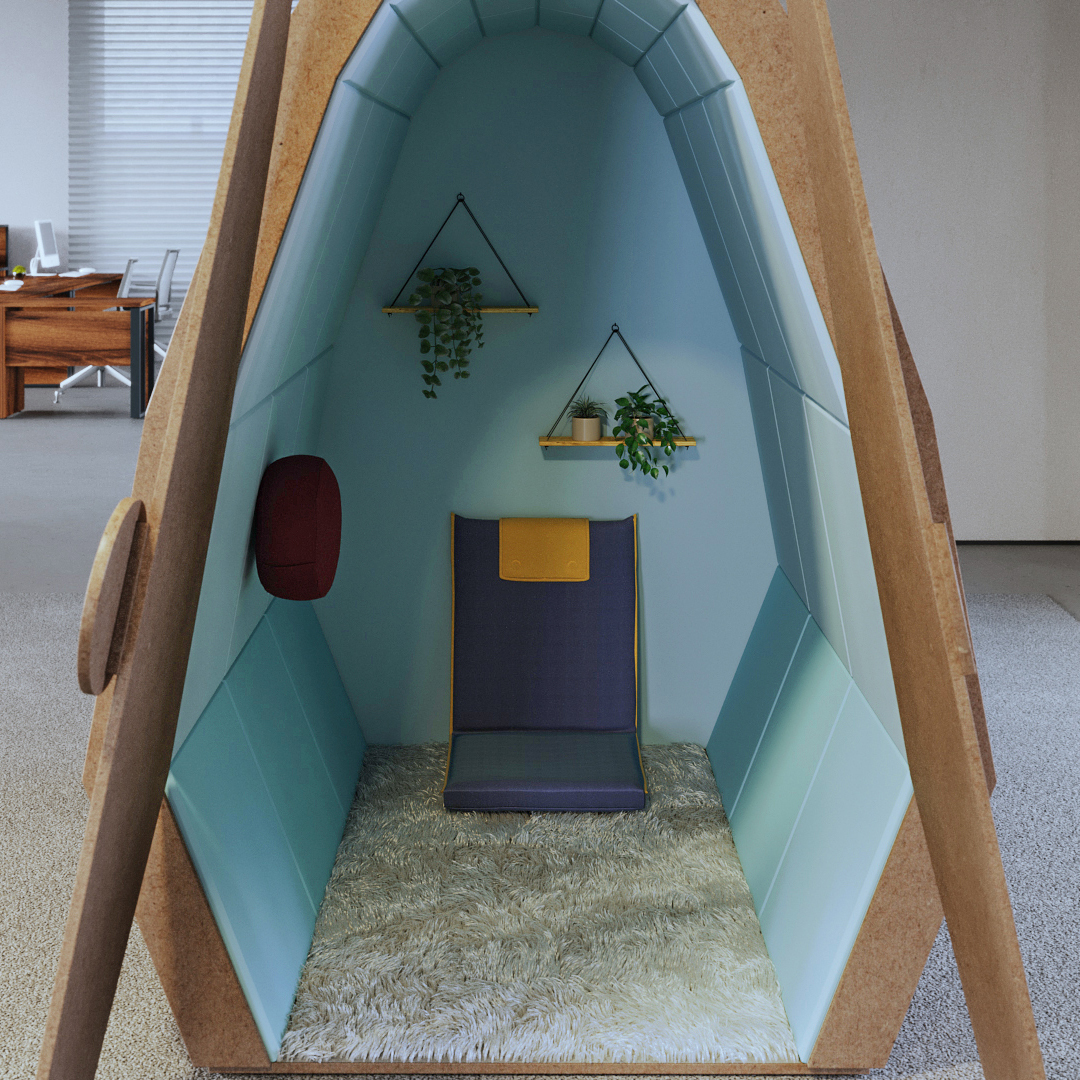Cultivating Wellbeing in the Modern Office: The Quiet Revolution

In today's fast-paced corporate landscape, the most valuable transformation isn't happening in boardrooms or strategy sessions. It's unfolding in the quiet corners of progressive workplaces, where employees are finding moments to breathe, reset, and reconnect with themselves.
The Mindful Workplace Movement
Picture this: It's 2:30 PM. The post-lunch slump has hit, and your team's energy is visibly waning. In traditional offices, this means powering through with another coffee or watching productivity steadily decline. But in forward-thinking workplaces, employees are taking intentional pauses—five minutes of guided breathing, a short mindfulness session, or even a strategic micro-nap—and returning to their desks refreshed and refocused.
This isn't workplace indulgence. It's strategic wellbeing integration, and it's changing how we work.
Researchers estimate that in private-sector organizations where employees perceive good health and well-being management, organizational performance is more than 2.5 times greater than in organizations with poor health and well-being management.
The research is clear: when people feel better, they think better, create better, and collaborate better."
Beyond the Buzzwords: Tangible Benefits
The conversation around workplace wellbeing has evolved significantly. What was once reduced to a token fruit bowl and occasional yoga sessions has matured into a sophisticated understanding of how wellbeing practices create measurable impact:
- Enhanced focus and attention spans as employees learn to manage their cognitive load through regular mental breaks
- Reduced stress-related absenteeism through proactive stress management techniques
- Improved creative problem-solving emerging from minds that have space to breathe and process
- Stronger team dynamics built on the foundation of individuals who bring their best selves to work
Perhaps most importantly, these practices help combat the pervasive digital fatigue that has become an occupational hazard in our always-connected world.
The Quiet Office Revolution
The most successful wellbeing initiatives aren't loud or disruptive—they're seamlessly integrated into the flow of work. Consider the growing trend of designated quiet spaces equipped with thoughtful amenities:
Audio therapy offering binaural beats to enhance focus or relaxation. Breathwork guidance that helps employees regulate their nervous systems between challenging tasks. Quiet pods that provide acoustic and visual privacy for moments of stillness.
These solutions, like those offered by Yinshi, aren't just pleasant additions to the office landscape—they're practical tools that help employees manage their cognitive and emotional loads throughout the day.


The Business Case for Breathing Space
For budget-conscious decision-makers, the question inevitably arises: What's the return on investment?
The answer lies in both the subtle changes in workplace dynamics and the concrete financial outcomes. According to research, companies that prioritise employee wellbeing saw their stock values appreciate by 325% compared to the market average appreciation of just 105%. This striking difference demonstrates that investing in employee wellness isn't just good for people—it's good for business.
Teams with access to wellbeing resources report higher satisfaction rates, show greater resilience during challenging periods, and demonstrate improved focus during critical projects.
Moving Forward: Integration, Not Interruption
The future of workplace wellbeing isn't about dramatic overhauls or disruptive changes. It's about thoughtful integration of practices and spaces that acknowledge our human needs in professional settings.
Solutions like Yinshi pods represent this philosophy perfectly—they don't demand a complete restructuring of the workplace, but rather offer intelligent, design-forward options that complement existing spaces while addressing fundamental human needs for pause, privacy, and restoration.
As we continue navigating the complex landscape of modern work, one thing becomes increasingly clear: the organizations that thrive will be those that recognize wellbeing not as a peripheral concern, but as a central pillar of sustainable success.
After all, in a world where human creativity and connection remain our greatest assets, supporting the whole person isn't just compassionate—it's competitive.

